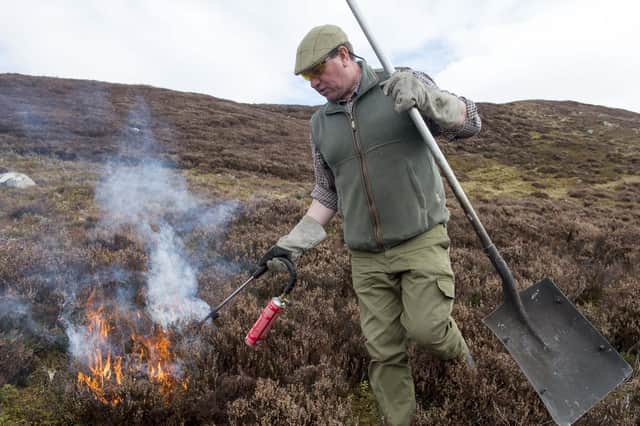Shooting estates' practice of muirburn helps ground-nesting birds, makes wildfires less likely, and saves peat from going up in smoke – Ross Ewing


Tourism bodies relentlessly showcase hills in glorious purple bloom when they market Scotland as a tourist destination. Who can blame them?
What is less known is the maintenance of this amazing landscape is down to the ancient use of fire to manage land, a practice called muirburn.
Advertisement
Hide AdAdvertisement
Hide AdIt’s done to rejuvenate heather by rotationally burning old vegetation in patches, enabling fresh shoots to grow, creating a mosaic habitat comprising plants of different ages.
The practice was initially carried out to provide sustenance for livestock, but over time muirburn has been found to support other organisms, especially ground-nesting birds, which favour young shoots for food and older heather for shelter.
Indeed, the tremendously positive impact of muirburn on red grouse has helped to produce harvestable surpluses for shooting, an activity of major importance to rural Scotland.
Sadly, the mere association with shooting has weaponised muirburn, and the extent to which mistruths have been spun is alarming. Chief among these is the assertion that muirburn damages peat, an important carbon sink.
Peat, of course, exists below the ground, usually covered by a layer of vegetation. For muirburn to damage peat, logic decrees that the fire would have to take hold beneath the ground.
It’s here where opponents of muirburn come a cropper. A controlled burn does not penetrate the ground. Rather, muirburn targets the wind-dried vegetation above the ground, in what is known as “a cool burn”.
If you visit the YouTube channel of Scotland’s Regional Moorland Groups, you will find videos of iphones and chocolate placed at the base of heather which is then subjected to a controlled burn. Both emerge unmelted. This shows how baseless is the spin from some campaigning groups.
Indeed, the stakes for ensuring muirburn plays a role in the management of the uplands have never been higher.
Advertisement
Hide AdAdvertisement
Hide AdWildfire risk is increasing – there were 243 wildfires in the first four months of this year alone. The management of fuel load – the accumulation of vegetation susceptible to catching fire – is now fundamental.
And it is in this vein that we all tangibly benefit from muirburn as it dismantles fuel loads in the cooler, wetter months between October and April. By doing so, it reduces wildfire risk across our indispensable carbon stores.
We simply cannot afford risking wildfire, which would destroy our precious peatlands and release billions of tonnes of carbon.
The Scottish Government have signalled their intention to license muirburn. So today, a few days after the start of the muirburn season, decision-makers should reflect on its evolving importance.
It enables key rural sectors to succeed. It supports a wide range of biodiversity, especially among ground nesting birds, but also among species associated with peat formation, such as sphagnum moss.
And it protects peatland by reducing the risk of devastating wildfires, rendering it a key component of our toolkit for climate change mitigation.
It is vital that licensing does not hamper the benefits that muirburn is delivering for Scotland. Our upland landscape is rightly treasured, even romanticised, in songs such as Wild Mountain Thyme.
Its future will be better served by the time-honoured craft that is muirburn.
Ross Ewing is the director of moorland at Scottish Land and Estates
Comments
Want to join the conversation? Please or to comment on this article.
